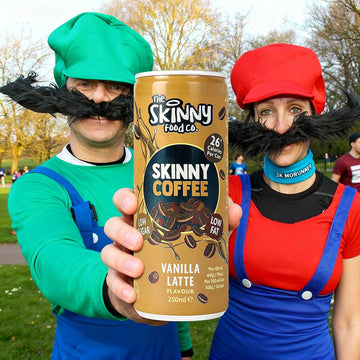BLOG - HOW TO RECOGNISE LOW & ZERO SUGAR PRODUCTS

Having a diet low in sugar is beneficial for many reasons which include reducing your risk of obesity, through having a healthy diet which won’t leave you feeling sluggish and tired by lunchtime as well as inducing weight loss. The first step in this process is being able to recognise low sugar products. The way this is done is by looking out for government-approved logos and indicators which can be found on the labels of the food products you buy.
Sugarwise
This is an international authority which has been responsible for certifying products in over 70 countries across Europe, the US, China and the Middle East. Sugarwise will verify upon assessment of the sugar level claims within products so that you have peace of mind and can actually trust that the labels you read are 100% honest, as companies have been known to be misleading when trying to sell you their products.
Sugar free, low sugar, no added sugar, reduced sugar, low calorie and calorie-free are all examples of company claims that will need to be verified. Guidelines to exactly how much sugar these claims amount to have been set by the World Health Organisation (WHO) which Sugarwise will adhere to.
Traffic-light System
Many products are now made even easier for you to recognise exactly how much sugar, salt, fat and saturates are in each serving using the traffic light system. The colours green, amber and red will indicate if there is a healthy/ unhealthy amount of each category per 100g contained inside.
In terms of the amount of sugar in your food, having a green rating will mean that there is 5g or under per 100g of that specific product. Amber indicates an amount of sugar between 5g and 22.5g per 100g of product and red tells you that there is more than 22.5g of sugar per 100g of that product.
Sugars in drinks run on the same traffic light system but their guidelines are set to different proportions. For example, a green rating tells the consumer that per 150ml of their drink there are under 2.5g of sugar. Amber indicates a sugar level between 2.5g and 11.25g per 150ml and Red will show you that there is over 11.25g of sugar per 150ml of that drink product.
This is an effective system for easily spotting if a product contains high or low levels of sugar but you have to remember the quantifying amounts are very small. For example in food, 100g only amounts to the size of a medium tomato or banana.
So when buying meals that are 300g / 400g in total even a green traffic light rating could be much more than originally thought. As 150ml equates to just under half a can of soda, when buying large cartons of fruit juice or squash this number will also have to be tripled or even quadrupled to find your true sugar value.
Look out for the sugarwise logos on our products & be sure to follow us on social media for all things Skinny Food Co and healthy living!



